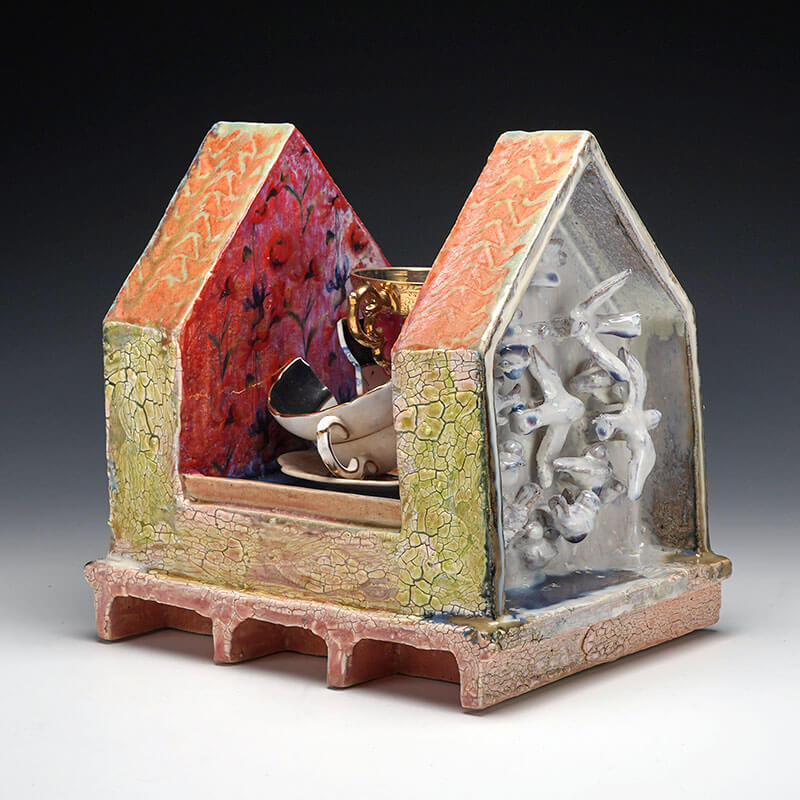
Red Lodge Clay Center – Short-Term Resident (AIA) 2023
Lydia Thompson is a visual artist and educator. She is a mixed media artist specializing in ceramics that focus on her cultural narratives. She received her Bachelor of Fine Arts degree from The Ohio State University and her Master of Fine Arts degree from the New York College of Ceramics at Alfred University. She received a Fulbright-Hays grant to conduct research on traditional architecture in Nigeria, a Windgate Distinguished Fellow for Innovation in Craft award and an Artist Support Grant from the Arts & Science Council of Charlotte / Mecklenburg, NC. She was awarded an AIR at the Hambidge Center for the Creative Arts & Sciences and has completed residencies at the Guldagergaard International Ceramic Research Center in Denmark and the Medalta Ceramic Center in Medicine Hat, Alberta, Canada.
Her work has been included in galleries, art centers, and museums such as the Mindy Solomon Gallery, the Society for Contemporary Crafts, the Baltimore Clayworks, The Clay Studio, Clay Art Center, the Ohr O’Keefe Museum, the Kentucky Museum of Art and Craft, James A. Michener Art Museum, the Crocker Art Museum, Mint Museum, Northern Clay Center and the Crocker Art Museum. She has completed public commissions for businesses such as the Marriott Hotel/UNC Charlotte and her work is in private and public collections in the US, New Zealand, Austria, Switzerland, and Italy. She has conducted workshops for youths and adults, given public lectures and served as a juror and curator for national and regional exhibitions. She served on the boards for NCECA (National Council of Education for Ceramics) and NCAA (National Council of Arts Administrators), Currently she resides and maintains her studio in Charlotte, NC and is Professor of Art in the Department of Art & Art History at UNC Charlotte.
My current work is an investigation of migration and residual ancestral memories that examine space and place of human existence. Geographical landscapes have provided resources for the continuous mobility of humans to create build communities and construct abodes. I’m constantly going back and forth to gather pieces of abandoned structures left to the atmosphere elements that blend the historical chronology of rural to urban human migration. Relics usually has associations with objects, or heirlooms, or parts of a body. I use historical ceramic figurines and other ceramic objects, that once held value or importance to a group a people and reduce them rubble/shards. This process is leveling the playing field or physical reminders of one’s existence. The structures produce a visual silence, evoke the imagination, offer notions of commodities and value, and illustrate a sense of desperation that provide insights to various cultural practices and traditions. These works are reminders of the past and current lessons to learn about the persistence and preservation of one’s own culture.
The work included at Red Lodge Clay Center references the US slavery era. The cup was used by wives of slave owners as a form of communication to control and summon house slaves by gently striking their teacup. In Peele’s movie, Get Out, the teacup represents the idea of “white” on the surface and “black” underneath. The teacup is used to hypnotize Chris, which symbolizes the way in which black people are often controlled and manipulated by white people in positions of power. Today, these historical teacups can be found in antique shops waiting for a new residency.








